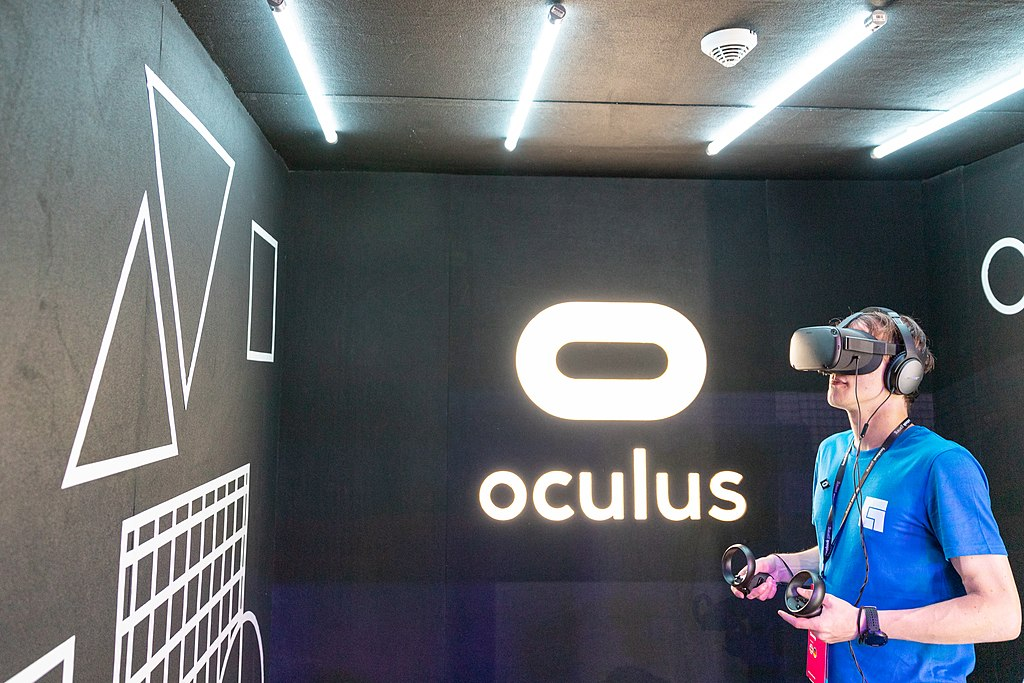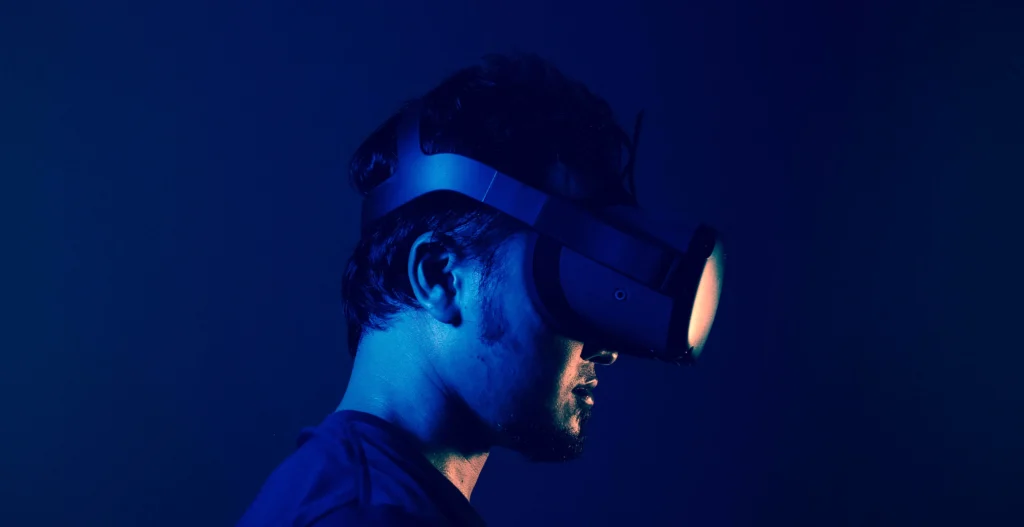Today, we’re tackling a big question: is VR gaming worth it? Prominent Virtual Reality headsets and VR games have been on the marketplace for many years now. In this era where we’re constantly advancing graphics with real-time ray-tracing and even AI upscaling, where does VR gaming belong? I’ll be tackling these questions and more below, so let’s get into it!
Table of Contents
How VR Gaming Looks Today
First, I want to establish the current status of the VR gaming scene, as of late 2023 and roughly halfway into the Ninth Generation of Gaming Consoles.

Currently, there are three distinct VR hardware markets, which I’ll list and detail below:
- PC VR — Regular Windows PCs with external VR headsets of varying qualities and price ranges. The best premium experience is easily the Valve Index, which retails for a hefty $999 with everything included. I’ll discuss Index and other, cheaper PC VR headsets in more detail below.
- Standalone VR — VR headsets using onboard mobile hardware to provide a completely standalone experience. The most prominent example of this is the Meta* Quest 3, which is only $500 for a headset and a surprisingly-complete VR gaming experience. Cheaper and used standalone headsets can price closer to ~$300, but the quality of the experience will obviously be compromised.
- Console VR – VR headsets attached to console gaming experiences. The primary examples are from PlayStation, with PSVR for PS4 and PSVR2 for PS5 consoles. These headsets are still costly, though, with PSVR costing $300 and PSVR2 costing $500.
*previously Oculus, of Oculus Rift fame
Is VR Gaming Worth It on Consoles?
With console gaming, VR actually has a long history of being…a mostly-unsuccessful gimmick. The infamous “Virtual Boy” turned Nintendo off of the concept until they released a Google Cardboard-esque VR headset with Nintendo Labo for a few Switch titles, but the low res of the Switch makes it a…not-great experience.
These days, the torch of VR gaming on consoles is pretty much being carried solely by PlayStation. Both Nintendo and Xbox seem to have abandoned VR efforts entirely, but PlayStation now has two generations of VR headset paired with PlayStation consoles. Combined with support from Sony’s own third and first-party developers, the PlayStation console VR experience can actually be quite nice.
That said, there are some downsides to the console VR experience that I think should be kept in mind. While both PSVR headsets offer full-body tracking, only the PSVR2 offers true 6DOF (Degrees of Freedom) full-body tracking, without needing to use a PS Camera peripheral.
PSVR2 also offers the benefit of dual 120 Hz OLED displays inside of the headset. Compared to the LCDs used by other headsets in its price range and lower, this gives the PSVR2 a fairly strong lead in visuals that are otherwise much more expensive to achieve on PC.
Since PSVR2 has raised the bar so much, I’d say that VR gaming is worth it on consoles…as long as the titles playable with PSVR2 actually appeal to you, of course. No reason to spend this much money on a peripheral if there aren’t any games you want to play with it!
Is VR Gaming Worth It on PC?
PC gaming is likely where VR gaming is healthiest, due to the sheer spread and variety of PC VR headsets. Not all headsets are made equally, though– some notorious, cheap VR headsets will offer only 3DOF tracking instead of 6DOF tracking, which doesn’t allow for full body motion. I firmly recommend sticking with headsets that support 6DOF tracking, with or without the use of external tracking stations.
That’s the thing about the highest-end of VR experiences, by the way: tracking stations! The Valve Index, HTC Vive, and plenty of other high-end PC VR headsets all require external tracking stations to provide accurate full-body tracking alongside the motion tracking in the headset and controllers.
Tracking stations are a mixed blessing. On one hand, the accuracy they provide is still better than 6DOF headsets without them. However, tracking stations also require a larger amount of free space and setup time than is needed with standalone or console VR, and that is a downside worth considering.
Overall, though, I’d say VR gaming is worth it on PC…particularly if you want to play Half-Life Alyx and other AAA VR experiences with the best possible tracking and visuals. You can also actually use a PSVR2 or Meta Quest headset with your PC through SteamVR, by the way— so by opting into any other VR ecosystem, you can also play around with PC VR, though an adapter will likely be needed for standalone headsets.
Is VR Gaming Worth It on Standalone VR Headsets?
Another place where VR is (surprisingly) healthy is actually in the market of standalone VR headsets. By combining a VR headset with highly-efficient mobile hardware, certain manufacturers are able to provide a Virtual Reality experience that is totally untethered from an existing console or PC. In recent years, these devices are making full use of 6DOF movement and the onboard mobile hardware, seeing many strong ports of PC VR titles, even if they don’t have the same graphics or mod support.
Many standalone VR headsets are also a surprisingly great deal, especially with the Meta/Oculus Quest series of VR headsets. The Quest 2 is still one of the best overall budget VR entry points at ~$350, and can be used as a PC VR headset with an appropriate link cable.
Overall, I would consider VR gaming worth it on standalone VR headsets for either users who want the most straightforward all-in-one VR experience or who want a cheaper entry into PC VR while still being able to enjoy VR away from the PC. The gaming experience is still strong on a mobile platform, but realistically the highest fidelity of VR gaming will always be experienced in PC VR, with dedicated tracking stations.
Is VR Gaming Worth It For You?
Finally…let’s wrap this up with a more important, direct question. Is VR gaming worth it for you?
To me, I think that question is worth giving some deep consideration, particularly if you aren’t easily able to make a lot of time outside of your home. Virtual Reality Gaming is certainly no substitute for going outside, but VR gaming has proven to be an incredibly effective at-home exercise tool, with various studies highlighting how intensive these games can be on the body.
To me, comparing the value proposition between home gym equipment and simply investing in a Virtual Reality headset…I’m pretty inclined to pick the VR headset, and not just because it can be the same price or cheaper versus actual equipment. VR games are also just…fun and highly immersive, but of course your personal enjoyment and comfort with VR may vary, particularly if you’re prone to motion sickness.
And of course, VR may also be a harder sell if you don’t have enough clearable space in your environment. In particular, crowded homes or studio apartments may not be appropriate for VR gaming experiences, at least not without some extreme shuffling of objects.
I can’t state with confidence whether or not VR gaming is worth it for you. However, I can wrap up this article by saying that VR gaming is worth it for me…although I would quite like it if the Valve Index were available for cheaper than $1000.
I know better than most that comparable experiences are possible for cheap, but I figure that if I’m going to get into VR, I might as well go all in. Fortunately, though, you don’t have to do this. Thanks to the efforts of Meta Quest and the likes of other sub-$500 PC VR and standalone VR headsets, the entry level of VR gaming has never been cheaper or more enjoyable than it is now.

